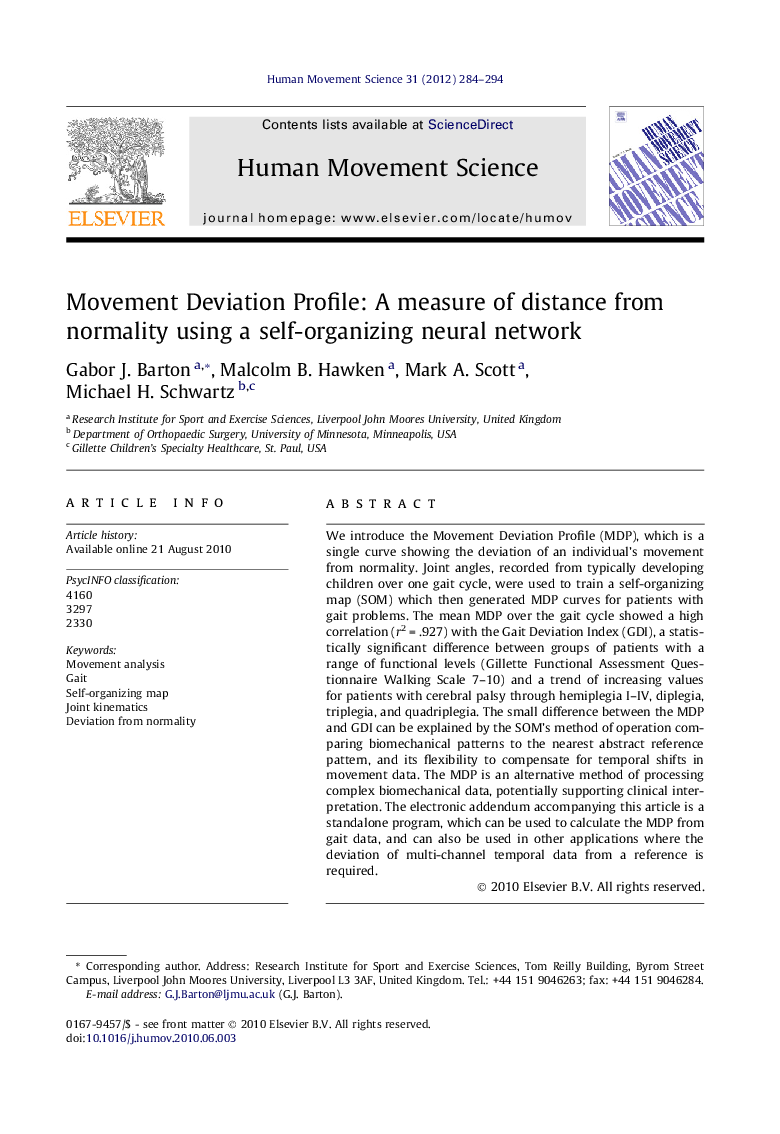| Article ID | Journal | Published Year | Pages | File Type |
|---|---|---|---|---|
| 928530 | Human Movement Science | 2012 | 11 Pages |
We introduce the Movement Deviation Profile (MDP), which is a single curve showing the deviation of an individual’s movement from normality. Joint angles, recorded from typically developing children over one gait cycle, were used to train a self-organizing map (SOM) which then generated MDP curves for patients with gait problems. The mean MDP over the gait cycle showed a high correlation (r2 = .927) with the Gait Deviation Index (GDI), a statistically significant difference between groups of patients with a range of functional levels (Gillette Functional Assessment Questionnaire Walking Scale 7–10) and a trend of increasing values for patients with cerebral palsy through hemiplegia I–IV, diplegia, triplegia, and quadriplegia. The small difference between the MDP and GDI can be explained by the SOM’s method of operation comparing biomechanical patterns to the nearest abstract reference pattern, and its flexibility to compensate for temporal shifts in movement data. The MDP is an alternative method of processing complex biomechanical data, potentially supporting clinical interpretation. The electronic addendum accompanying this article is a standalone program, which can be used to calculate the MDP from gait data, and can also be used in other applications where the deviation of multi-channel temporal data from a reference is required.
